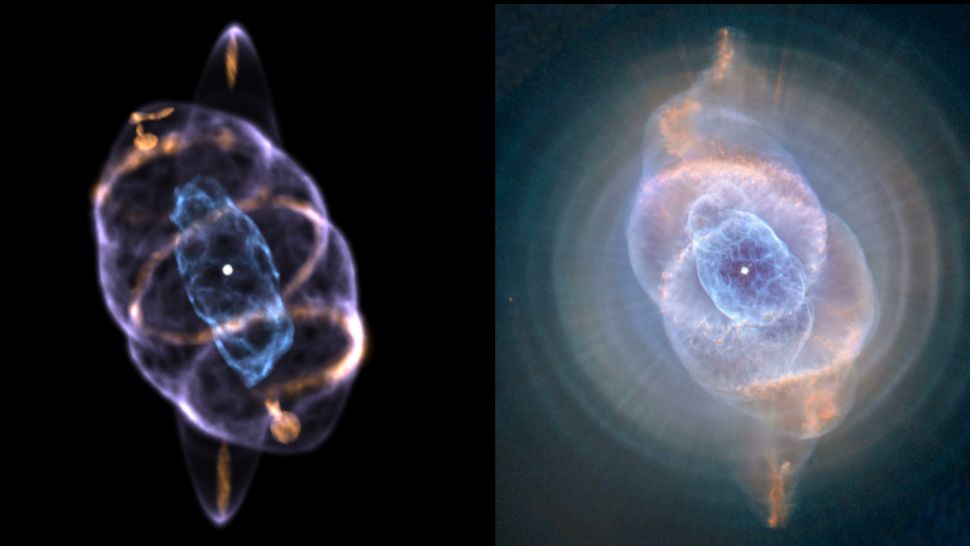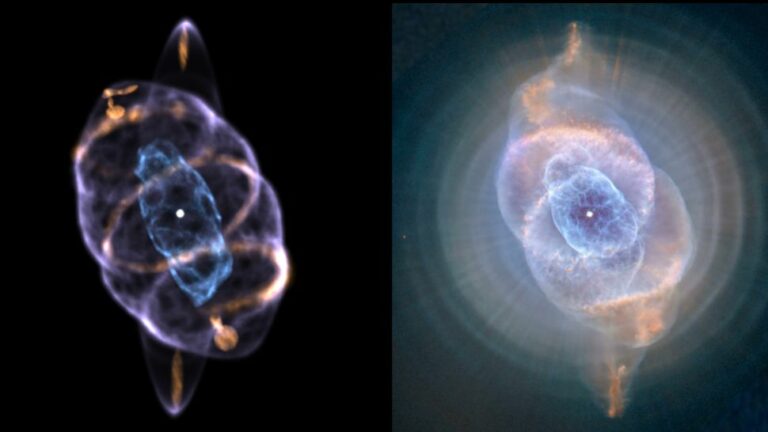Astronomers discover secret star at the center of gorgeous Cat’s Eye Nebula
The galaxy’s “most complex” nebula exposes its important secret.
A fading star is the best gas leaker.
A planetary nebula is a brilliant and stunning bubble created when a star around the size of the sun shed its outer layer of gas as it nears the end of its existence. Astronomers have compared the gas at each bubble’s core as crabs, reptiles, and horrifying screaming faces as a result of the feeble star’s continued irradiation of its environs.

The Cat’s Eye Nebula, which is around 3,000 light-years away from Earth, is one of the most bizarre and perplexing of these cosmic cloud paintings. The nebula, which seems to be composed of multiple overlapping bubbles of blue gas that are tightly encircled by long, streamer-like filaments, has eluded understanding for thousands of years.
New analysis presented on September 15 in the Monthly Notices of the Royal Astronomical Society(opens in new tab) publication may now provide a solution. Astronomers built the first-ever 3D model of the Cat’s Eye Nebula using information gathered by the San Pedro Mártir National Observatory in Mexico depicting the motions of several layers of gas in the nebula.
A pair of completely symmetrical rings are shown around the full length of the nebula’s exterior on their computer-generated map. The symmetry of these rings can only be explained by a double-barreled energy burst known as a precessing jet, claim the researchers.
The twin blasts of high-density gas were essentially discharged simultaneously in opposing directions when the nebula’s core star perished, according to the study’s authors. The jets, however, started to wobble (or precess) like a spinning top instead of staying stationary, leaving progressively looping rings of gas twirling above and below the star.
According to the study’s authors, jets like this are uncommon and can only be seen in binary star systems, or systems with two core stars circling one another. Strong proof that the Cat’s Eye Nebula was originally a binary star system that disintegrated spectacularly may be found in these jets.
According to main research author Ryan Clairmont, an undergraduate student at Stanford University, “Precessing jets in planetary nebulae are rather unusual, so it’s crucial to understand how they contribute to the creation of more complicated systems like the Cat’s Eye” (opens in new tab). In the end, comprehending their formation offers insight into the ultimate fate of our Sun, which will eventually transform into a planetary nebula.
Originally published on Live Science
Do not forget to share your opinion with us to provide you with the best posts !




0 Comments